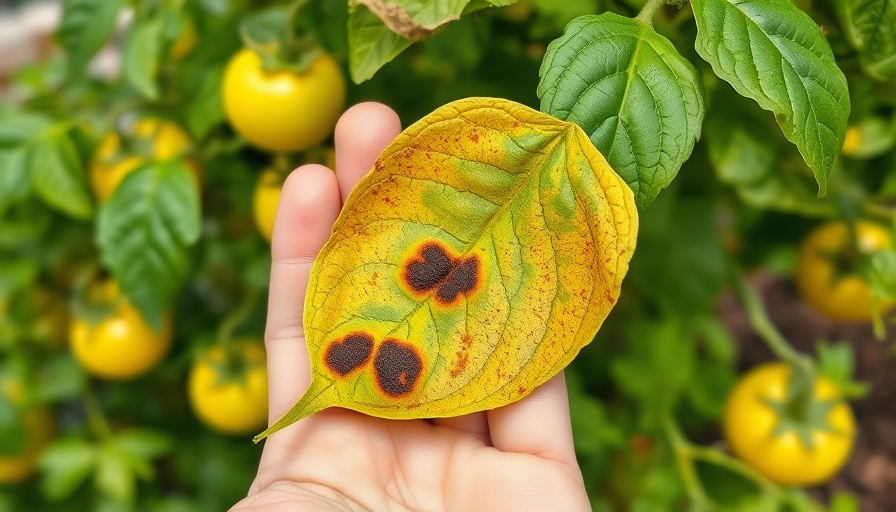
Understanding Septoria Leaf Spot: A Gardener's Guide
When it comes to nurturing tomato plants, enthusiasts often face a host of challenges, but few issues are as pressing as Septoria leaf spot. This fungal disease can devastate your tomato crop, particularly in areas with extended wet and humid conditions, making it essential for growers to have a solid understanding of how to identify and manage this potentially ruinous disease.
Identifying the Symptoms of Septoria Leaf Spot
The journey towards effective control begins with knowledge. Small, water-soaked spots appearing on the lower leaves of your tomato plants signal that something is amiss. At first glance, these lesions can be quite subtle, measuring about 1/16 to 1/8 of an inch in diameter. What to look for? Dark brown borders surrounding gray or tan centers are a hallmark, while mature lesions will develop tiny, dark structures known as pycnidia—think of them like tiny flecks of black pepper. If spotted, it’s crucial to act swiftly.
Differentiating from Early Blight
Often confused with early blight, it’s vital to learn how to distinguish between these two fungal diseases. While early blight lesions do not contain visible pycnidia and tend to feature the characteristic bullseye pattern, Septoria’s lesions do, and they lack this signature look. This knowledge empowers growers to make informed decisions about their treatment approaches.
The Lifecycle and Spread of the Disease
In warm, damp temperatures ranging from 59 to 80°F, the fungal spores scatter, spreading the infection rapidly among plants. This emphasizes the importance of regular monitoring and immediate action upon identifying symptoms—unseen spores may accumulate on leaves and splash onto uninfected plants, exacerbating the problem.
Cultural Control: Prevention is Key
Preventing Septoria leaf spot requires more than just reactive measures. Here are a few cultural control practices that can help:
- Proper Spacing: Ensure adequate air circulation around tomato plants to reduce humidity, inhibiting fungal growth.
- Watering Techniques: Water plants at their base instead of overhead to minimize leaf wetness. Early morning watering gives foliage time to dry during the day.
- Crop Rotation: Avoid planting tomatoes in the same location year after year, as this can help break the disease cycle.
Fungicide Treatments as a Last Resort
If cultural methods prove insufficient, fungicides may be necessary. Organic fungicides can be effective, but they must be applied regularly and as a preventive measure to ensure protection. Always follow the manufacturer's instructions for application to avoid harming beneficial insects in your garden.
Taking Swift Action: The Importance of Being Proactive
Recognizing and addressing Septoria leaf spot early can prevent severe damage. If you detect the first signs, remove affected leaves and apply appropriate treatments. Remember, an ounce of prevention is worth a pound of cure, particularly in your garden where every tomato counts.
Conclusion: Cultivating Success Through Knowledge
With knowledge comes power, especially in gardening. Understanding how to identify, prevent, and manage Septoria leaf spot can save your tomato crop from ruin. By implementing cultural controls and, if necessary, integrating organic fungicides, you can create a thriving environment for your plants. Be vigilant, be informed, and enjoy the fruits of your labor this gardening season!
Call to Action: Dive deeper into the world of DIY organic gardening and explore sustainable practices that can enhance your gardening journey. Embrace learning and discover how gardening tips and techniques can lead to a flourishing garden filled with health and beauty!
 Add Row
Add Row  Add
Add 




Write A Comment